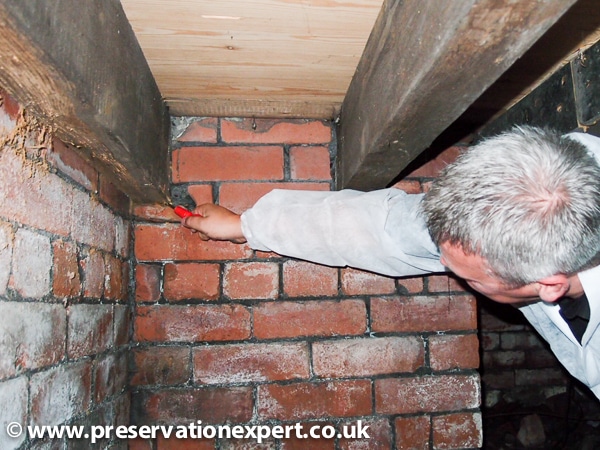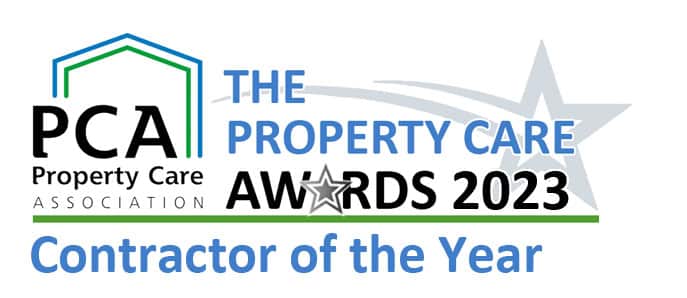Damp survey? Damp report? These terms come up every day, all around Yorkshire, when people are either buying or selling houses and there doesn’t have to be a damp problem for a damp survey to be asked for.
The problem is that most of us don’t buy and sell houses every day, so when a damp survey or damp report is asked for, people don’t know where to turn and that leaves them open to stress, confusion and sometimes; poor service.
So this is what a damp survey is and I’ll briefly describe the process of a damp survey and what a damp report is likely to contain. I’ve been carrying out damp surveys on houses for the last 30 years, so I’ve done quite a few.
Damp is a common issue and affects a large number of homes. At the benign end it can be ‘something and nothing’, perhaps a few spots of mould or a stain on ceiling due to a slipped roof tile. However, at the other end of the scale, damp can cause real damage to a house; rotting structural timbers, perishing plaster and sometimes making selling a house difficult, as potential buyers and mortgage lenders are put off.
A damp survey is usually asked for because a previous survey, by a valuer or building surveyor has picked something up, which he wants investigating further, often by a damp specialist like us. Sometimes a damp report is merely asked for as a precaution; there may be no suspected problem, but the valuer or surveyor wants to double check, to protect his client from a nasty wet surprise, later down the line. Often a damp and timber report will be required, but for this post, let’s stick to the damp survey.
The damp surveys would usually go something like this:
After arranging access with the vendor the damp surveyor will arrive and after a brief introduction get to work.
This will first involve a walk around the outside of the property. The damp surveyor needs to establish the construction details, are the walls solid, cavity, rubble filled?is there a damp course present?
What’s the lie of the land like, sloping? How high in relation to the internal floors and such? What is the design of the house like; features which may need regular maintenance and could allow damp to occur if ignored; valley gutters; copings at verges, rainwater pipes; surface water drains; other walls intersecting the house, like boundary wall, retaining walls and such? all these will be taken in by him. Are there chimney stacks?
Then, he’ll look for defects: What’s the pointing like? Render? Is it cracked, hollow, in contact with the ground or bridging the damp course (if there is one)? What about the gutters and down-pipes? Is the DPC bridged? Are there vents or ventilation cowls for the kitchen and bathroom extractors? Is the stone or brick porous? Are there bushes or ivy which could block gutters or hide other problems?.
If this sounds a lot, it’s not an exhaustive list, but gives a flavour of what any experienced and qualified damp surveyor will be considering within minutes of arriving.
Then the internal damp survey will start, though usually the damp surveyor will have a chat with the vendor (if the house is occupied). Any work done before? What’s the history of the house?
Whilst the surveyor will go all around the house, he will already have a good idea of where any damp problems are likely to be, following the clues he’s picked up outside.
His damp meter will not be used yet. First it’s a visual walk-around, looking for stains, loose wallpaper, peeling paint, salting or other signs of a damp problem. Then he’ll use his moisture meter to do two things:
- Check the walls where there are no apparent signs of damp (but where his observations lead him), just in case the damp problem is new and hasn’t damaged the decorations yet (or has been masked by recent decoration
- Where a visual problem is seen, or where an elevated damp reading is found, he’ll want to use his meter to check if the problem is an old one, which has dried out. If it hasn’t and high damp readings are obtained, he’ll start to profile the area, to find out what the relative distribution of the moisture is. This moisture profile will help his damp diagnosis and combined with the visual internal and external inspection, it should allow a reasonable diagnosis of the cause of the damp to be made.
A damp report is needed so he’ll be taking notes and perhaps photographs along the way, so that a clear written damp report can be issued.
Recommendations, as to what to do about the damp (if anything) are an essential part of the damp report. These could include simple maintenance work, like re-pointing, installing an extractor fan, or repairing gutters, down-pipes or a roof.
Sometimes the cause of the problem may be rising damp or a severe penetrating damp issue or damp under hydrostatic pressure (this just means below ground level, such as in a cellar). In these cases a damp specialist will prepare a damp report, which includes a specification for the required work, a quotation for the work and an offer of some form of guarantee.
In our case we offer Guarantee Protection Insurance bonding to cover our guarantee and our findings are also covered by professional indemnity insurance, in case we make a mistake which costs our client money.
There are damp specialist surveyors who are independent and don’t quote for work, but most of these will offer a repair specification and advice on how to find a good specialist damp proofing firm to carry out the work for you.
The damp report will often be required by a lender and these days, many of them recommend that the damp survey is carried out by a damp specialist who is a member of the Property Care Association. This is because the damp proofing industry is unregulated and unfortunately there are quite a few damp ‘specialists’ who have no industry qualifications, no insurance and sometimes no idea what they are doing. The PCA do not accept applications for membership without a strict vetting procedure to make sure members are qualified, insured and willing to abide by the PCA’s code of ethics, which puts customers first.
The Property Care Association has hundreds of members all around the country; specialist damp proofing contractors; independent damp specialist surveyors and highly skilled independent consultants too. Using a Property Care Association member is the best way of avoiding unqualified, under insured or cowboy traders, who offer damp surveys and damp reports which in many cases are defective, contain wrong advice and are done by surveyors with no insurance.
What qualifcations are there for damp surveyors?
Qualifications for approved damp surveys are defined as CRDS (Certificate in remedial damp surveying ? discontinued about ten years ago), and CSRT (Certificate in remedial treatment). The CSRT is the modern version of CRDS and is roughly the same other than the fact that CSRT is a combined damp and timber infestation qualification (so the CSRT surveyor can advise on woodworm and rot problems too), and the CSRT also includes an environmental and health and safety module, which these days, is desirable and very sensible.
Both our surveyors hold the CSRT and an additional CSSW which is the structural waterproofing (below ground), qualification. CSSW is essential if the damp report includes any basement rooms.
Whilst damp surveys and damp reports can be obtained for free, most PCA contractor members and all independent damp surveyors and consultants charge a fee for the survey. These vary from well under a hundred pounds to quite a sum, if consultancy work is needed. You tend to get what you pay for in the damp proofing world, so beware the free survey brigade, who can’t pay for the fuel they burn on the way to the house to do your survey, without winning some damp proofing work from somewhere?. Nothing in life is free and if it sounds too good to be true etc.
We hope the above is useful and has given you some idea of what to expect from a damp survey. If you have any queries, do please call our free customer service line on 0800 591 541 or fill in our contact form.


